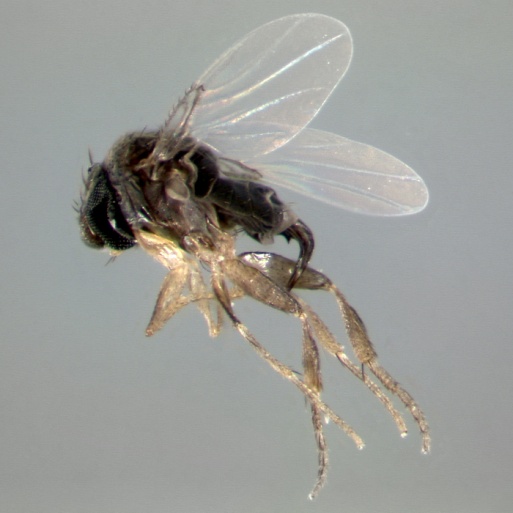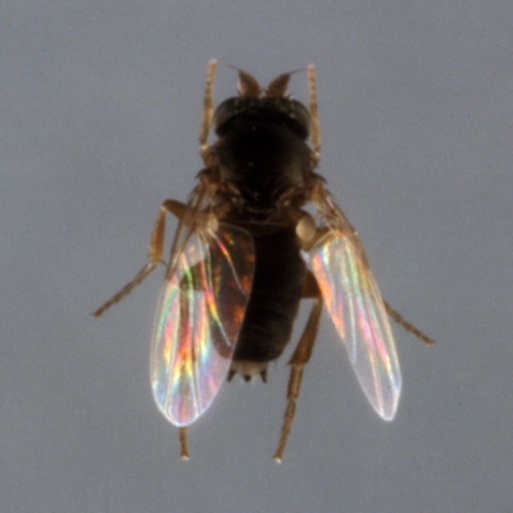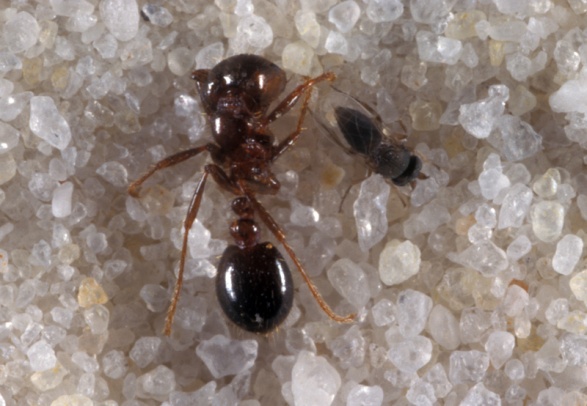
Pseudacteon curvatus Borgmeier
Pseudacteon tricuspis Borgmeier
(Insecta: Diptera: Phoridae)
Pseudacteon curvatus and Pseudacteon tricuspis are parasitoid flies that attack red imported fire ants, Solenopsis invicta Buren. Larvae decapitate their ant hosts and use the empty head capsule as a pupal case. This habit coined the name “decapitating flies” for Pseudacteon species.
The flies are just 1.4 mm long, about the size of a fire ant head. Microscopic examination of wing venation is necessary to distinguish between the two Pseudacteon species. Eggs are torpedo shaped, and the three instars of larvae are legless maggots.
Flies are attracted to alarm pheromones released by ants when mounds are disturbed. Four days after an egg is deposited into an ant, a second instar occupies the ant’s head. The ant dies while the third instar feeds and pupates within the head, causing the ant’s head to fall off eventually. Metamorphosis into the adult fly may take two to six weeks.
Originating from South America, Pseudacteon tricuspis and Pseudacteon curvatus were released as classical biological control agents in the United States beginning in 1997 and 2000, respectively. They are now successfully established in the southeastern United States.
Images
To save the Web-optimized images shown below to your hard drive:
PC users: right click to "Save Picture (or Image) As..."
Mac users: click and drag to your desktop.

Lateral view of adult female of Pseudacteon curvatus Borgmeier
(Photographer: Lyle Buss, University of Florida)

Dorsal view of adult female of Pseudacteon tricuspis Borgmeier
(Photographer: Lyle Buss, University of Florida)

Adult fly of Pseudacteon tricuspis Borgmeier (right) and a worker ant of its host, red imported fire ant, Solenopsis invicta (left)
(Photographer: Lyle Buss, University of Florida)